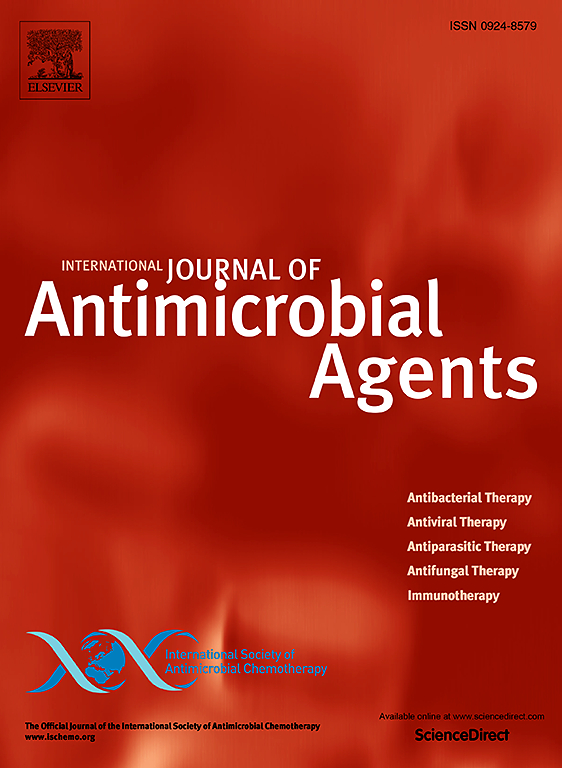The potential of RNA-binding proteins as host-targeting antivirals against RNA viruses
IF 4.6
2区 医学
Q1 INFECTIOUS DISEASES
International Journal of Antimicrobial Agents
Pub Date : 2025-04-20
DOI:10.1016/j.ijantimicag.2025.107522
引用次数: 0
Abstract
RNA-binding proteins (RBPs) are essential regulators of cellular RNA processes, including RNA stability, translation, and post-translational regulation. During viral infections, RBPs are key regulators of the viral cycle due to their interaction with both host and viral RNAs. Herein, we initially explore the roles of specific RBP families, namely heterogeneous nuclear ribonucleoproteins (hnRNPs), DEAD-box helicases, human antigen R (HuR), and the eukaryotic initiation factors of the eIF4F complex, in viral RNA replication, translation, and assembly. Next, we examine the potential of these RBPs as host-targeting antivirals against pandemic-prone RNA viruses that have been gaining momentum in recent years. Targeting RBPs could disrupt cellular homeostasis, leading to unintended effects on host cells; however, RBPs have been successfully targeted mainly in anticancer therapies, showcasing that their modulation can be safely achieved by drug repurposing. By disrupting key viral-RBP interactions or modulating RBP functions, such therapeutic interventions aim to inhibit viral propagation and restore normal host processes. Thus, conceivable benefits of targeting RBPs as alternative antiviral strategies include their broad-spectrum activity and potential for combination therapies with conventional antivirals, reduced or delayed resistance development, and concomitant enhancement of host immune responses. Our discussion also highlights the broader implications of leveraging host-directed therapies in an attempt to overcome viral resistance. Finally, we emphasise the need for continued innovation to refine these strategies for broad-spectrum antiviral applications.

RNA结合蛋白作为RNA病毒宿主靶向抗病毒药物的潜力
RNA结合蛋白(rbp)是细胞RNA过程的重要调控因子,包括RNA稳定性、翻译和翻译后调控。在病毒感染过程中,rbp是病毒周期的关键调节因子,因为它们与宿主和病毒rna相互作用。在此,我们初步探讨了特异性RBP家族,即异质核核糖核蛋白(hnRNPs)、DEAD-box解旋酶、人抗原R (HuR)和eIF4F复合物的真核起始因子,在病毒RNA复制、翻译和组装中的作用。接下来,我们研究了这些rbp作为宿主靶向抗病毒药物的潜力,以对抗近年来获得势头的大流行倾向RNA病毒。靶向rbp可能会破坏细胞稳态,导致对宿主细胞的意外影响;然而,rbp已经成功地主要用于抗癌治疗,表明它们的调节可以通过药物再利用安全地实现。通过破坏关键的病毒-RBP相互作用或调节RBP功能,这种治疗干预旨在抑制病毒传播并恢复正常的宿主过程。因此,靶向rbp作为替代抗病毒策略的可能好处包括其广谱活性和与常规抗病毒药物联合治疗的潜力,减少或延迟耐药性的发展,以及伴随的宿主免疫反应的增强。我们的讨论还强调了利用宿主导向疗法来克服病毒耐药性的更广泛意义。最后,我们强调需要不断创新,以完善这些广谱抗病毒应用的策略。
本文章由计算机程序翻译,如有差异,请以英文原文为准。
求助全文
约1分钟内获得全文
求助全文
来源期刊
CiteScore
21.60
自引率
0.90%
发文量
176
审稿时长
36 days
期刊介绍:
The International Journal of Antimicrobial Agents is a peer-reviewed publication offering comprehensive and current reference information on the physical, pharmacological, in vitro, and clinical properties of individual antimicrobial agents, covering antiviral, antiparasitic, antibacterial, and antifungal agents. The journal not only communicates new trends and developments through authoritative review articles but also addresses the critical issue of antimicrobial resistance, both in hospital and community settings. Published content includes solicited reviews by leading experts and high-quality original research papers in the specified fields.

 求助内容:
求助内容: 应助结果提醒方式:
应助结果提醒方式:


